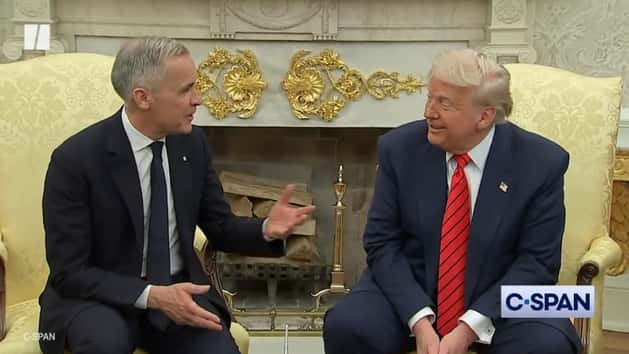


If you’re loyal to President Donald Trump and his democracy-testing agenda, then you just might land a job in the Trump administration. But if you’re extremely loyal, then you might land three or even four.
Last week, the president tapped Secretary of State Marco Rubio to serve at least temporarily as his new national security adviser, after exiling Mike Waltz of Signal-gate fame to New York City as his new ambassador to the United Nations, pending Senate confirmation. Rubio will remain in his full-time, Senate-confirmed role as the president’s chief foreign affairs adviser while also managing our national security.
But Rubio also has two other side gigs, at least on paper. Trump has installed him atop the National Archives and Records Administration after ousting the chief archivist, and also put him in charge of the U.S. Agency for International Development, the foreign aid agency Trump has tried to unilaterally dismantle.
Rubio’s four-position portfolio is just the most high-profile example of job juggling within the administration. Several other officials also have been plucked for multiple roles, raising the question of how they could possibly run different departments simultaneously. Heading up just one federal agency is a massive undertaking.
“They’re leaders of very large organizations. They have management challenges, operational issues and a mission they need to meet,” said Jenny Mattingley, head of government affairs at the nonpartisan Partnership for Public Service. “When you have multiple hats on, how do you lead one [agency], let alone three or four? It becomes a real challenge.”
If the number of jobs one holds is a barometer for Trump’s confidence in an official, then U.S. Trade Representative Jamieson Greer comes in a close second behind Rubio.
“This notion that any president would give one individual two jobs to me just makes no sense.”
- Kathryn Dunn Tenpas, Brookings
Greer is responsible for coordinating U.S. trade policy at a time when Trump has instigated what could be the biggest global trade war since the Great Depression. But he’s also supposedly running two other federal agencies, the Office of Special Counsel and the Office of Government Ethics. The OSC is responsible for protecting government whistleblowers and the merit system in federal employment, while the OGE oversees ethics programs in the executive branch.
This sort of personnel practice is not at all normal, said Kathryn Dunn Tenpas, a scholar on the American presidency and visiting fellow at the Brookings Institution. She said it was “mind boggling” for the secretary of state, in particular, to have other jobs, noting that Rubio holds the highest Cabinet position in the presidential line of succession other than the vice president.
“It is incredibly unique when you compare Trump to other presidents,” Tenpas said, noting several officials had dual roles during his first presidency. “This notion that any president would give one individual two jobs to me just makes no sense. I’ve been studying White House staffing since the early ’90s. This just doesn’t compute.”
Before Greer took over, the OSC and OGE jobs had been held in the short term by Veterans Affairs Secretary Doug Collins, who was overseeing the largest agency other than the Defense Department, with more than 400,000 VA workers.

Office of Management and Budget Director Russell Vought also has been pulling double duty as the temporary head of the Consumer Financial Protection Bureau, the financial services watchdog Trump has tried to shutter. Trump seems to like the idea of one person running these two particular agencies at the same time, as he had Mick Mulvaney do it during his first term.
Another two-way player, Treasury Secretary Scott Bessent, briefly served as the CFPB’s acting director before Vought stepped in.
Meanwhile, Secretary of the Army Daniel Driscoll is side-hustling as the acting director of the Bureau of Alcohol, Tobacco, Firearms and Explosives. Federal Bureau of Investigations Director Kash Patel had briefly pinch-hit as the ATF acting director ahead of Driscoll.
And Richard Grenell is serving as Trump’s special missions envoy — working “in some of the hottest spots around the world,” in the president’s words — while also holding the title of president at the Kennedy Center.
Mattingley noted that wearing two or three hats could become more common in agency middle management if Trump succeeds in politicizing the civil service through his Schedule F scheme. Turning career positions into political appointments would lead to more turnover, with openings likely to be filled by loyalists.
“When you have multiple hats on, how do you lead one [agency], let alone three or four?”
- Jenny Mattingley, Partnership for Public Service
On top of being less effective, officials with multiple roles also are more likely to create conflicts of interest. House Democrats noted in a letter to Greer that as the head of OSC and OGE, he could be tasked with investigating whistleblower and ethics cases at his primary agency, the Office of the U.S. Trade Representative.
“Given these concerns, we do not have confidence in your ability to impartially or effectively fulfill the demanding responsibilities of each office,” the Democrats wrote.
But Trump almost certainly doesn’t want these officials fulfilling the missions of certain agencies. He does not believe USAID or the CFPB should exist, and has made clear his disdain for the National Archives, which played a central role in the classified documents case that included 40 felony indictments against him.
Nor would the president have any love for the OSC, whose previous leader tried to block Trump’s firing of tens of thousands of probationary federal employees, or the OGE, which is tasked with preventing the sort of ethical conflicts of interest Trump is famous for.
So handing an agency’s reins to a loyalist with a couple other jobs could be a great strategy for not doing anything at all.
“What better way to do it than name somebody but don’t expect them to do anything?” Tenpas said.

